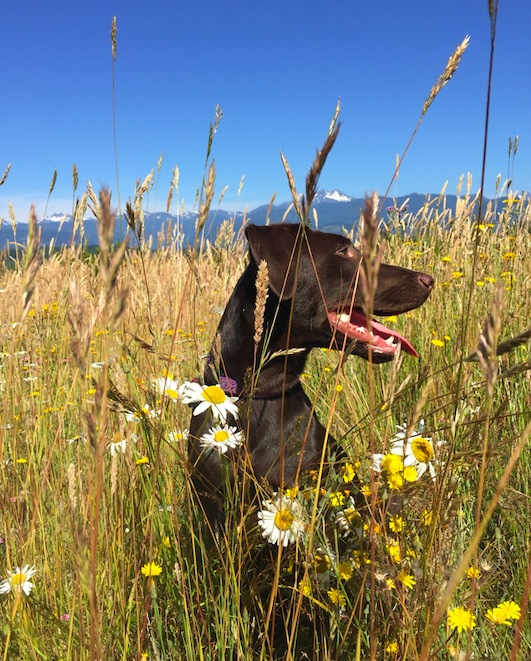
Grass seeds are no joke. Many are dangerous for dogs (and even cats) in that they can easily penetrate outer skin through a dog’s paws, legs, eyes, stomach, personal bits, and ear canals. If left untreated, these injuries can be incredibly painful, and in a worst case scenario, seeds can work their way into a dog’s innards and cause damage that can be fatal.
Some of the most dangerous grass seeds to our dogs, grasses like cheatgrass and foxtail, will start being produced in the next couple of months and you should not only be on the lookout for them as you play, hunt, and walk with your dog, but you should start getting into the habit of doing dog-foot-and-body checks every day with tweezers at hand.
Indications that something like a foxtail as penetrated a dog’s nose or elsewhere is that he is sneezing or shaking his head. Feel for strange skin spots or lumps, and as you examine your dog’s paw, separate the pads because that’s where seeds often end up.
We hadn’t intended to go down this road.
We meant to share a link leading you to a report about the Jackson Hole Weed Management Association which has teamed up for the third year in a row with Teton County Weed and Pest, and Working Dogs for Conservation (the world’s leading conservation detection dog organization) to locate, remove and eradicate saltcedar and perennial pepperweed on the Snake River. Read about how dogs are helping sniff out invasive seed sources near the Snake River here.
One day, out of the blue, my whippet started to lean his head to the side, which I recognized as some sort of ear problem. But on further examination, there was no redness or inflammation or excessive ear wax or infection. Turns out it was just one little grass seed that had entered his ear, causing him pain. Fortunately he managed to either shake it out or dislodge it, and he returned to normal. But I’ve heard of a whippet in the same situation that had to be sedated just so the vet could remove the grass seed that was in his ear.
Thanks for sharing your experience, Hindy. A vivid reminder that all breeds are impacted by “mean seeds,” not just the hairy ones. We’re glad you were so attentive to have noticed your guy’s situation!